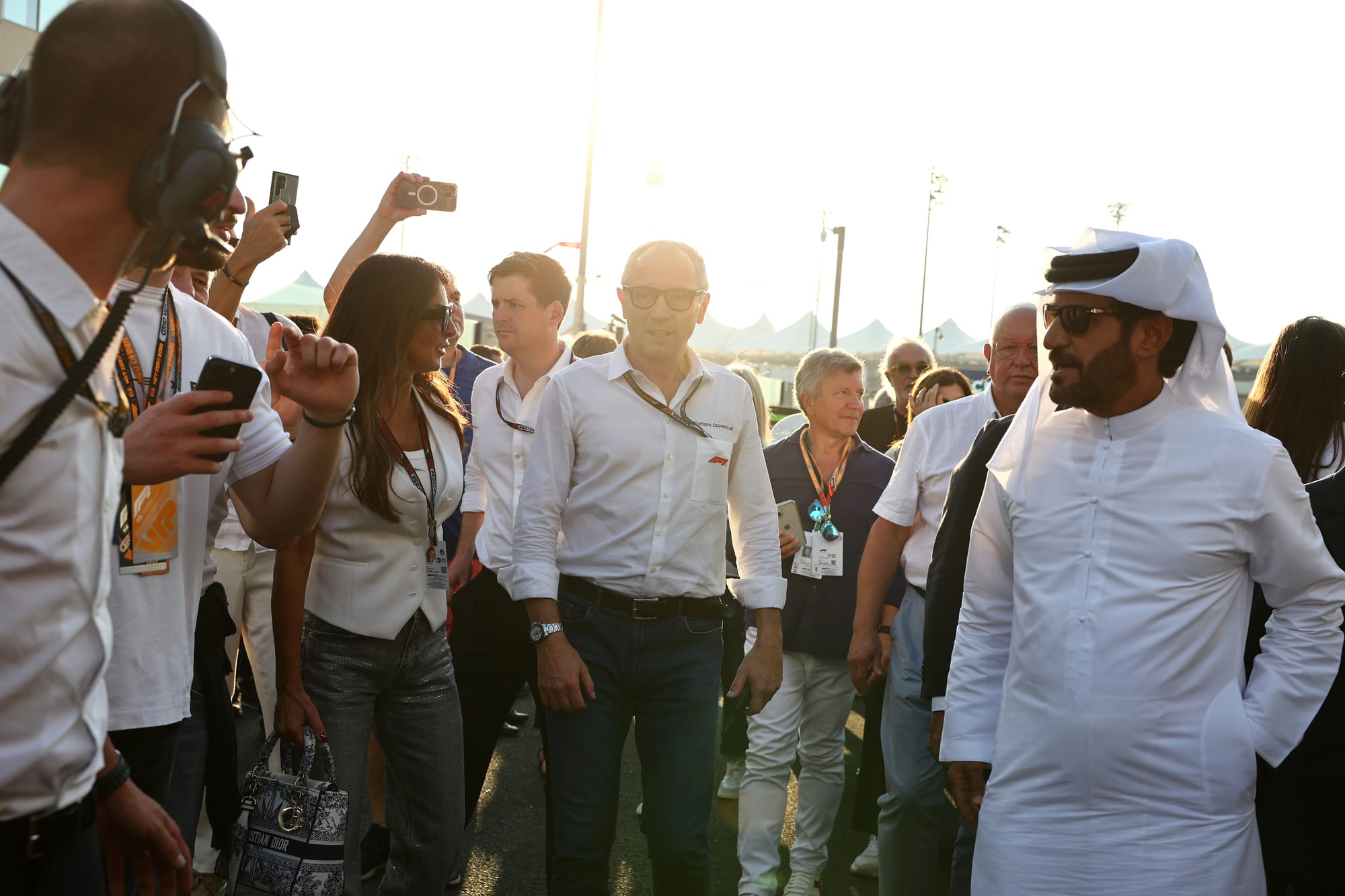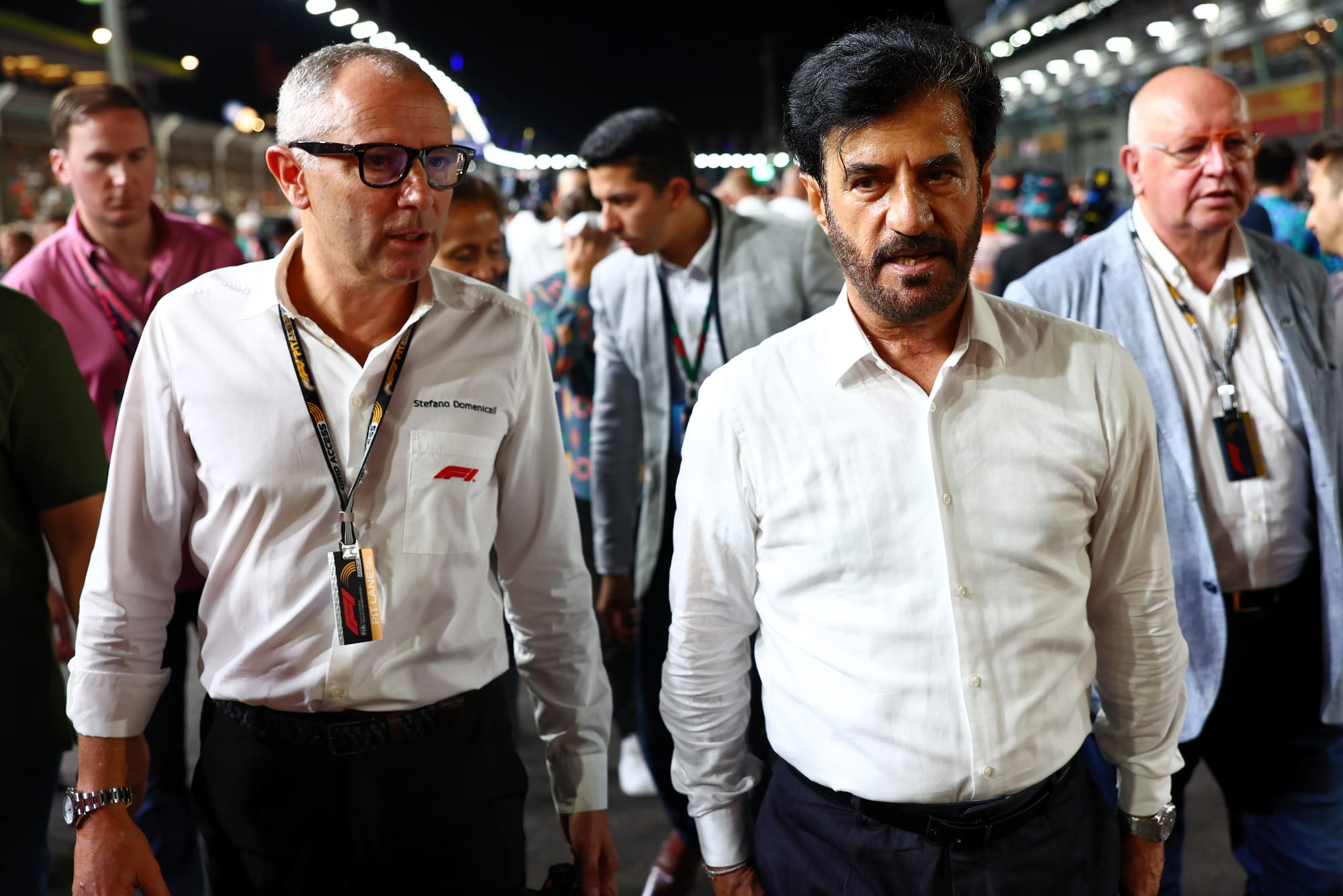Formula 1 has hit the headlines for all the wrong reasons in 2024, brutally exposing the lack of leadership at a time when it’s needed most.
The controversies have come thick and fast. From the Red Bull investigation into Christian Horner’s conduct to the criticisms of lack of transparency and the farrago of the new-team process and ethics investigations into FIA president Mohammed Ben Sulayem, there’s been a constant stream of bad news.
F1, not long ago riding the crest of a wave of growth, hype and excitement, now looks flat-footed and problematic.
Politics and controversy have always been part of F1, but the past six months have turned that up to 11. With Max Verstappen and Red Bull dominating on track, a remarkable achievement but now a repetitive story that means the racing product can’t paper over the cracks, this is a true test of those steering the F1 ship. And collectively, they have failed miserably.
At the heart of the problem is the structure of Formula 1. Constitutionally speaking, it comprises three elements – the FIA (as regulator), Liberty Media/FOM (as commercial rights holder) and the teams. While the teams are the most vocal, the leadership of F1 is really a combination of the FIA and Liberty Media. And that’s the problem.
There have always been tensions between the regulatory and the commercial side of F1. The FISA/FOCA War of the early 1980s is the most celebrated manifestation of this, but the uneasy alliance has existed in various forms for decades. Today, there’s a simmering phoney war between the FIA and FOM that is at the heart of this lack of leadership.

This matters not only because it means the direction F1 is being steered in is compromised thanks to the two sides pulling in different directions, but also the off-track controversies mean there has been reputational damage. The optics are terrible, as amid all of these negative stories the perception is that F1 as a whole is doing and saying nothing.
In doing so, that confirms to many the worst expectations of F1, particularly when it comes to question marks about the treatment of female staff.
The responsibility for this paralysis lies equally at the door of the FIA and FOM. When it comes to the stewardship of grand prix racing, with its great history, exciting present and hopefully long future, the top priority for both should be working together for the greater good. Their failure to get on the same page and collaborate fully reflects terribly on both sides.
At the heart of this are FIA president Mohammed Ben Sulayem and FOM CEO Stefano Domenicali. It’s no secret the two have a difficult relationship, but it is their responsibility to work together. And they aren’t. Each will point the finger at the other, and it’s true there are inevitably areas where the regulator and commercial rights holder will have different agendas, but for F1 to work the two sides need to be aligned.

Domenicali and F1 arguably give the impression of caring only about the share price and ensuring that, presumably a point further down the line, Liberty Media sells at a vast profit. That manifests itself in a strategy of ‘more’, which has led to the muddied thinking of the sprint races and exposed the shallow strategic thinking when it comes to increasing the on-track offering.
As for the FIA, while Ben Sulayem is fundamentally correct to fight for the strength of the regulator when it risks being subsumed by the commercial side, the way the new-team process was approached and is now left hanging after FOM rejected Andretti and the constant question marks about his and the FIA’s conduct – the key one being focused on Susie Wolff’s criminal complaint - appear at odds with good governance.
The two sides could continue to battle, blaming the other for their failure to collaborate and endlessly dredging up the same old conflicts as the turf war goes on and on. That’s the easy way to approach things as it tends to be the natural order. But they could also show a collective statespersonship by getting on the same page, working for the betterment of F1 and showing to the watching world that grand prix racing is in good hands. However that would require the more venal motivations to be set aside and working together for the greater good, something neither side appears willing to do.
It was easy for leadership to look (mostly) good in the times of plenty and during the rise of F1 stoked by the sensational 2021 world championship battle, the Netflix Drive to Survive effect and the explosion in social media interest that was the case. But when things have got harder, the vacuum at the top has been laid bare.
The two sides will recognise the role only of the other in this critique. But it’s time to set aside petty rivalries and do what both should be there to do – look after the health and reputation of grand prix racing for the long term.
Both sides will blame the other for the failure to collaborate properly, but it takes two to tango and as is so often the case it will need each to recognise the need to prioritise working together well and find a way to do so before improvements can be made.
Right now, only damage is being done.

